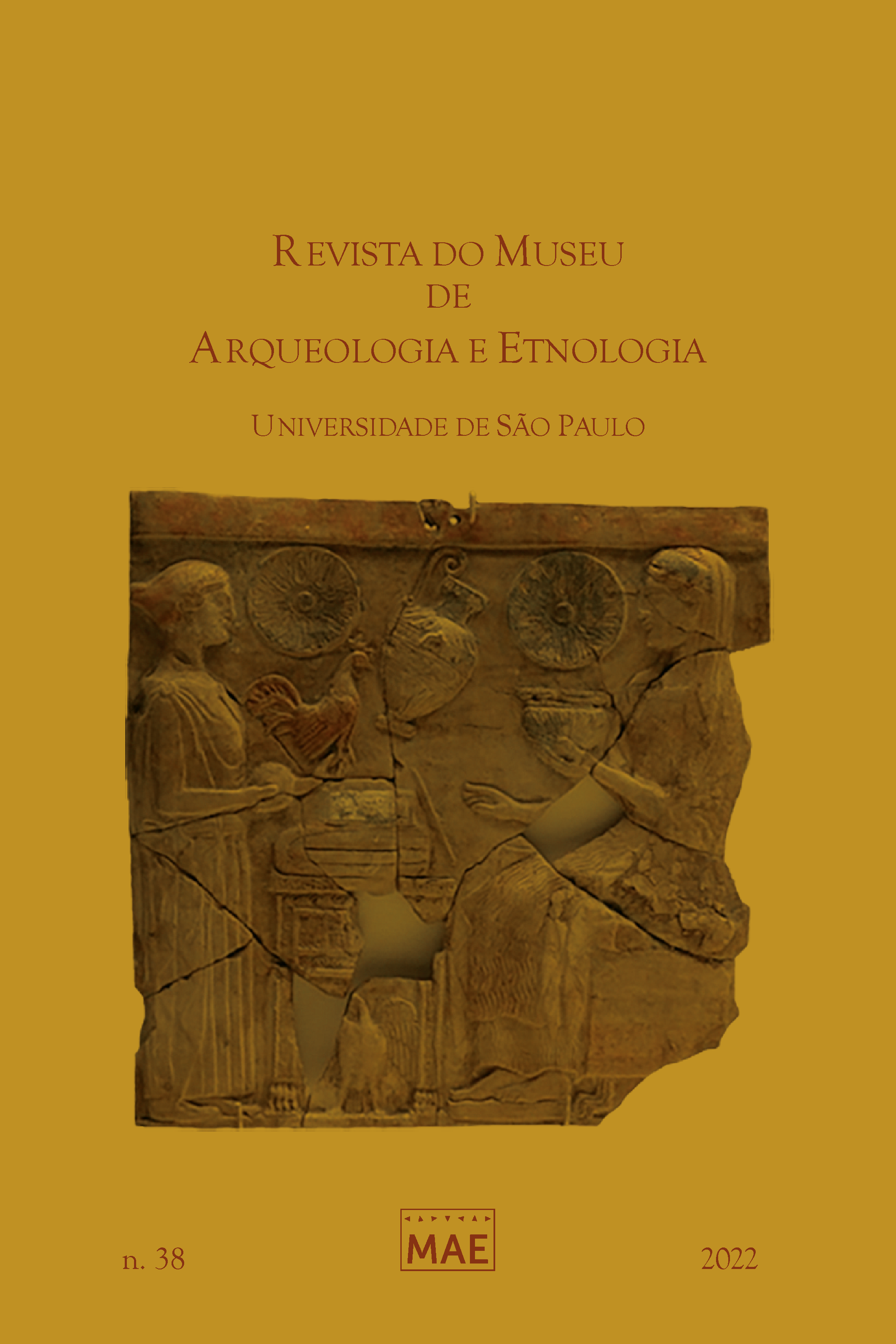Pólis e insularidade
DOI:
https://doi.org/10.11606/issn.2448-1750.revmae.2022.187317Palavras-chave:
Pólis, Insularidade, Arqueologia das ilhas, Cíclades, Mar EgeuResumo
Neste colóquio sobre a unidade e a diversidade das cidades mediterrânicas, discorremos sobre a expressão do fenômeno da cidade nas ilhas dessa região, mas, especificamente, sobre o contexto grego das póleis, a partir da época arcaica, no arquipélago das Cíclades, no Mar Egeu. Escolhemos as Cíclades porque se trata de um conjunto de ilhas com no máximo 400 km2, sendo, assim, consideradas ilhas menores, se comparadas às ilhas mediterrânicas com milhares de quilômetros quadrados (como a Sicília, a Sardenha, Creta). Nas ditas ilhas “pequenas”, os impactos da insularidade, que nos interessam compreender, são sempre maiores do que nas consideradas ilhas “continente”, como a Sicília, por exemplo. Nesse sentido, propomos apresentar o debate e discutir, ainda que inicialmente, as seguintes questões: (1) como aspectos impostos pela natureza insular puderam influenciar a organização física e política das póleis em ilhas? (2) Quais fatores podem explicar a existência do número de póleis nas ilhas?
Downloads
Referências
Angliker, E. 2021. Cults and sanctuaries of the Cycladic islands. Tese de doutorado. University of Zurich, Zurich.
Constantakopoulou, C. 2007. The dance of the islands: insularity, networks, the Athenian Empire, and the Aegean World. Oxford University Press, Oxford.
Dawson, H. 2019. Island Archaeology. In: Smith, C. (Ed.). Encyclopedia of global archaeology. Springer, Cham, 1-8.
Gordon, J.M. 2018. Insularity and identity in Roman Cyprus: connectivity, complexity, and cultural change. In: Kouremenos, A. (Ed.). Insularity and identity in the Roman Mediterranean. Oxford, Oxbow Books, 4-40.
Morris, S.P.; Papadopoulos, J.K. 2005. Greek towers and slaves: an archaeology of exploitation. American Journal of Archaeology 109, 2: 155-225.
Reger, G. 1997. Islands with one polis versus islands with several poleis. In: Hansen, M.H. (Ed.). The polis as an urban centre and as a political community: historisk-filosofiske Meddelelser, Copenhagen, 75, 450-492.
Reger, G. 2004. The Aegean. In: Hansen, M.H.; Nielsen, T.H. (Eds.). An inventory of archaic and classical poleis. Oxford University Press, Oxford, 732-793.
Sfyroera, A. 2018. Naxos, the largest Cycladic island with a single polis: a survey through ancient times. In: Angliker, E.; Tully, J. (Eds.). Cycladic archaeology and research: new approaches and discoveries. Oxford, Archaeopress, 325-338.
Vilatte, S. 1991. L’insularité dans la pensée grecque. Université de Franche-Comté, Besançon, 446, 3-255. Annales littéraires de l’Université de Besançon.
Zagora Archaeological Project. 2014. Disponível em: <https://bit.ly/3vAmduD>. Acesso em: 14/06/2021.
Downloads
Publicado
Edição
Seção
Licença
Copyright (c) 2022 Lilian de Angelo Laky

Este trabalho está licenciado sob uma licença Creative Commons Attribution-NonCommercial-NoDerivatives 4.0 International License.


















